Can I Wash My Car at Home Uk
UK spiders will often enter our homes in search of somewhere warm to shelter, especially in autumn and winter.
Most British spiders found in UK homes are harmless to humans, but lots of people are scared of them nonetheless. Whether it's in the corner of our living room, in the bath or hanging quietly from the ceiling, these are the most common UK spiders you're likely to spot.
1. Daddy Long Legs or Cellar Spiders
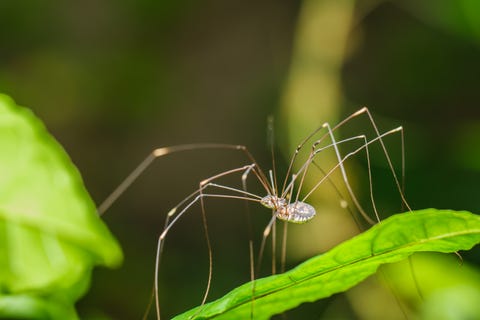
photonewman Getty Images
One of the most common UK spiders is the Daddy Long Leg. Commonly also known as Cellar Spiders, the thin, spindly spiders have extremely long legs and are often found in corners of the home, particularly during late summer. During the day, this species will stay incredibly still, however, when they are disturbed, they will vibrate on their web to scare away any attackers.
2. False Widow Spider
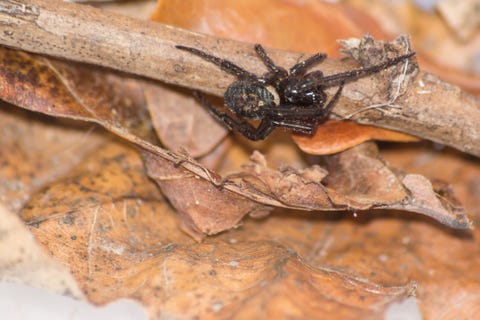
Steve_Hardiman Getty Images
While these UK spiders aren't usually dangerous to humans, if they get caught in your clothing they might give you a little nip on the skin. These bites don't cause much irritation, but it's always advised to head to your local GP if irritation continues over a prolonged period of time. Most False Widows are a brownish colour with white markings on their back. When the weather cools down, you may notice the eight-legged creatures coming into your home to keep warm.
3. Giant House Spider
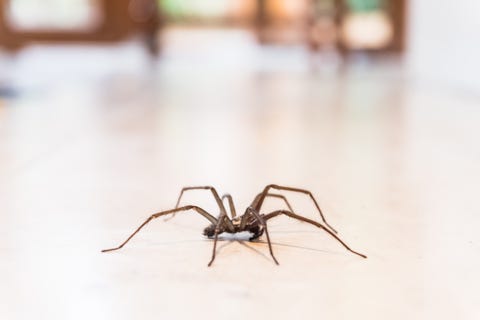
CBCK-Christine Getty Images
The Giant House Spider is one of the fastest spiders around, and can impressively run up to half a metre per second. It can be identified by its large, brown body and will commonly be found in UK homes during autumn. Places to spot them include behind the fireplace, in the bath or under the sofa.
This content is imported from {embed-name}. You may be able to find the same content in another format, or you may be able to find more information, at their web site.
4. Cupboard Spider
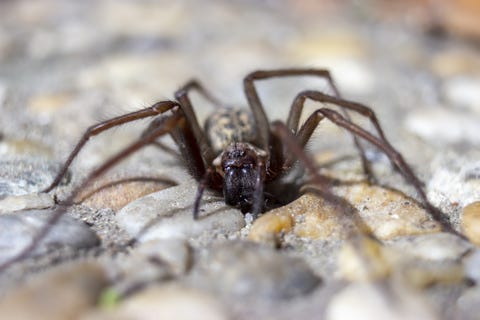
JK21 Getty Images
Cupboard spiders got their name because they have adapted to living in our cupboards. They are also known as dark comb-footed spiders. This spider lives in the UK but also abroad where, in places home to more venomous spiders, is often mistaken for the notorious black widow.
5. Lace Web Spider

Jacqueline kelsall Shutterstock
The Lace Web Spider is usually around four to 15mm long and can be spotted living in the holes of walls and bark. These are very common and widespread around the UK, so don't be surprised if you find them around your home during autumn and winter, particularly after it has rained. Their web is made from a fine silk (which is where their name comes from) and has a wooly texture.
6. Zebra Spider

ErikKarits Getty Images
The Zebra Spider — or the Jumping Spider — can be identified by its black and white body. This species may be smaller in size compared to others, but they can move very fast (especially when they feel they are being attacked). During April and October is when you are most likely to see this spider.
7. Cardinal Spider
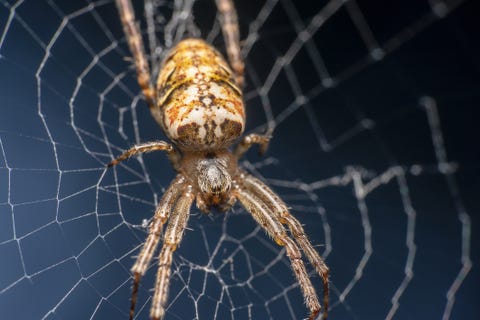
Saurav Karki Getty Images
One of the largest spiders in the UK is the Cardinal Spider or the Tegenaria parietina— which can grow up to 14cm in size. You'll be able to spot this species by its reddish brown body and find it living mostly in walls of buildings. They're not prone to bite humans, but have been known to react with a bite if they feel threatened.
Cardinal spiders can survive for months without food and got their name from a 14th Century legend claiming that Cardinal Wolsey saw one in Hampton Court and was scared of it.
8. Money Spider
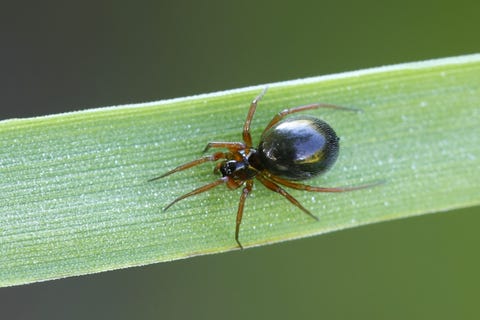
Shutterstock
The Money Spider is a family of very small spiders, which are also often known as Sheet Weavers. They are often spotted close to ground level on garden plants, in long grass or around plant pots outside. Around five millimetres in length, they are small compared to others found in the home. You'll be able to identify the spider by its glossy brown body.
This content is imported from {embed-name}. You may be able to find the same content in another format, or you may be able to find more information, at their web site.
9. Orb Weaver Spider
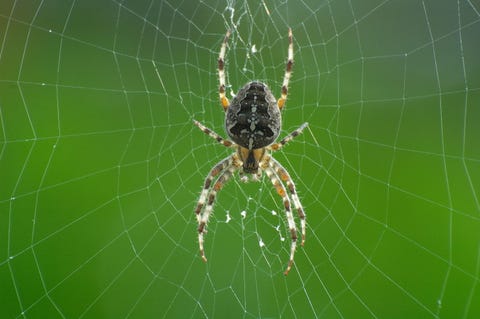
Powerfocusfotografie Getty Images
Orb weaver spiders are found between July and October, making webs in gardens around the country (and helping to keep the flies out). They are eight millimetres long and get their name from the large orb-shaped web they spin.
10. Buzzing spider

Ines Carrara Getty Images
Buzzing spiders get their name thanks to the male behaviour of vibrating on leaves to attract mates.
In the UK, these spiders are predominantly found in the South and prefer to hide in shrubbery and in trees as opposed to on the ground, where they feel more vulnerable.
11. Cave spider
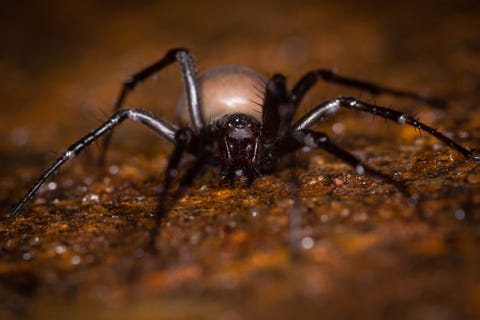
Ian_Redding Getty Images
As the name suggests, you're more likely to find this UK spider in a cave as opposed to in a house. They like dark places with very little light and can be found all over the country. Cave spiders are 10mm to 15mm long.
12. Crab Spider
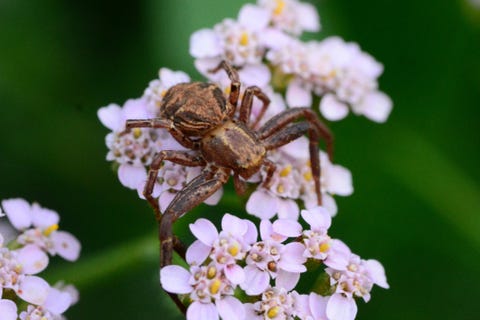
Ines Carrara Getty Images
This is another UK spider you are more likely to find outdoors than in your home. The common crab spider is most frequently seen from March to August all over the country and their prefered habitat is low-lying vegetation.
When hunting, the crab spider jumps on their prey's back and pierces them from behind.
13. Cucumber Green Orb Spider
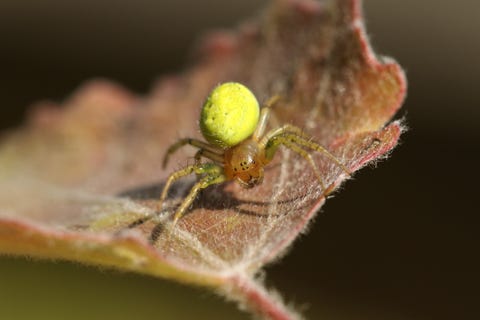
sandra standbridge Getty Images
These UK spiders got their name thanks to their green colouring. They can also be identified by a red mark under their abdomen. Found in shrubbery and hedgerows, cucumber spiders are most commonly seen in the UK from April to October. The catch prey by waiting for flying insects to fall victim to their orb web.
14. European Garden Spider

Connor Skidmore Getty Images
Found all over the UK and Europe, as well as North America, the European Garden Spider has many names, including diadem spider, orangie, cross spider, crowned orb weaver and the pumpkin spider.
15. Four Spot Orb Spider
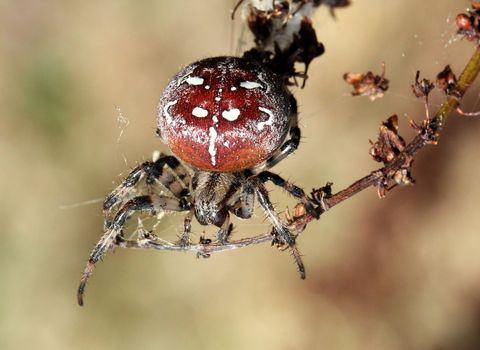
Ger Bosma Getty Images
Distinguishable by the four white spots on their orbs, this is one UK spider species where the females are double the size of the males, at 17mm. This is the UK's heaviest spider and they prefer a habitat of gardens, wooded areas, marshes or long grassland.
16. Green Huntsman Spider
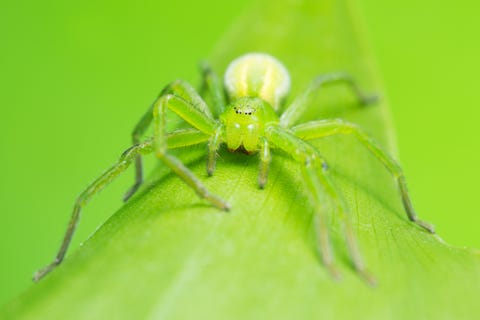
Henrik_L Getty Images
The huntsman spider is known for being dangerous in other countries but the UK has its own less harmful version – the green huntsman spider. They are very rare but, on occasion, can be found in woodland from May to September and are most common in South England and Ireland. Their green colouring gives them perfect camouflage.
17. Jumping spider
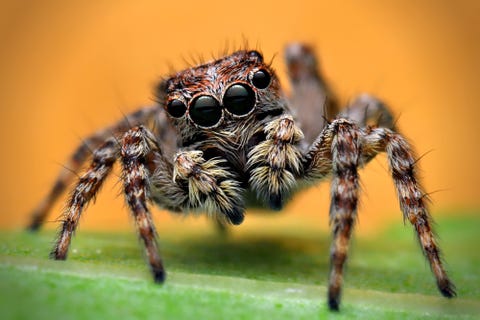
xbn83 Getty Images
Jumping spiders are part of the largest family of spiders in the UK. They have excellent eyesight and use it to help them jump on their prey when hunting. They are mainly identified by their four pairs of eyes. They are also very small.
18. Labyrinth spider
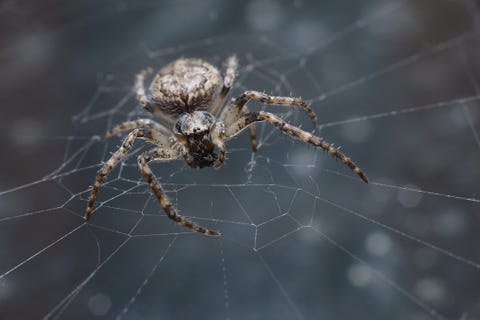
Pavel Abramov Getty Images
The labyrinth spider is most commonly found in Wales and England in hedgerows and long grass. These large spiders are so named because they build sheet webs that lead prey to an intricate labyrinth of tunnels where they can eat in private.
19. Running Crab Spider

ePhotocorp Getty Images
The running crab spider is very small and are common in Wales and England between April and October.
20. Sector Spider or Missing Sector Orb Weaver
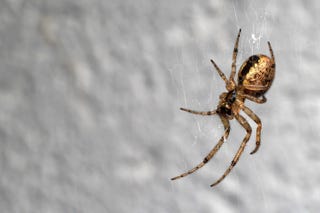
Mike O'Brien Getty Images
The sector spider (also known as the missing sector orb weaver or the silver-sided sector spider) is a UK spider that lives only in houses. They are commonly found hanging in window frames. They are solutary spiders and the female is identifiable by a leaf-like mark on her posterior.
Like this article? Sign up to our newsletter to get more articles like this delivered straight to your inbox.
SIGN UP
Love what you're reading? Enjoy Country Living magazine delivered straight to your door every month with Free UK delivery. Subscribe now to save on the shop price + get instant digital access to the latest issue!
SUBSCRIBE
6 natural products to keep flies out of the home
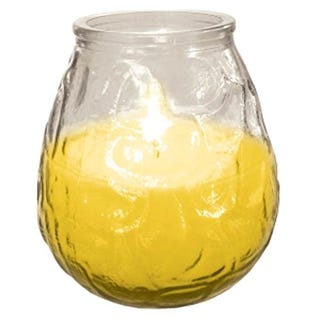
Outdoor Citronella Candle In Glass Jar Fly Insect Repeller Repellent
Price's Candles amazon.co.uk
£5.98
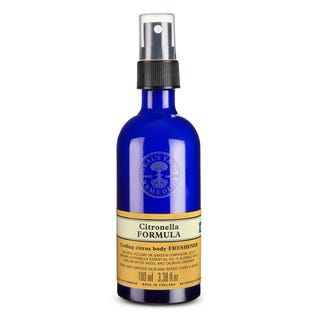
Bath & Body
nealsyardremedies.com
£9.50

Outdoor Citronella Candles set Travel Tin
LA BELLEFÉE amazon.co.uk
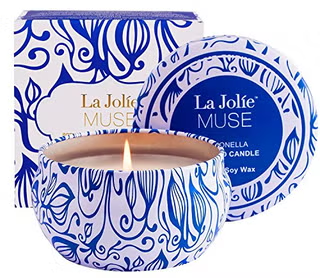
La Jolíe Muse Citronella Candle Mosquito Fly Insect Repellent 100% Soy Wax Travel Tin Indoor and Outdoor 45Hours
La Jolíe Muse amazon.co.uk
£11.99

HS Candle 10 pcs Citronella 4
HS Candle amazon.co.uk

Citronella Essential Oil
Gya Labs amazon.co.uk
US$9.99
This content is created and maintained by a third party, and imported onto this page to help users provide their email addresses. You may be able to find more information about this and similar content at piano.io
Source: https://www.countryliving.com/uk/homes-interiors/interiors/a28995962/uk-spiders/